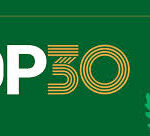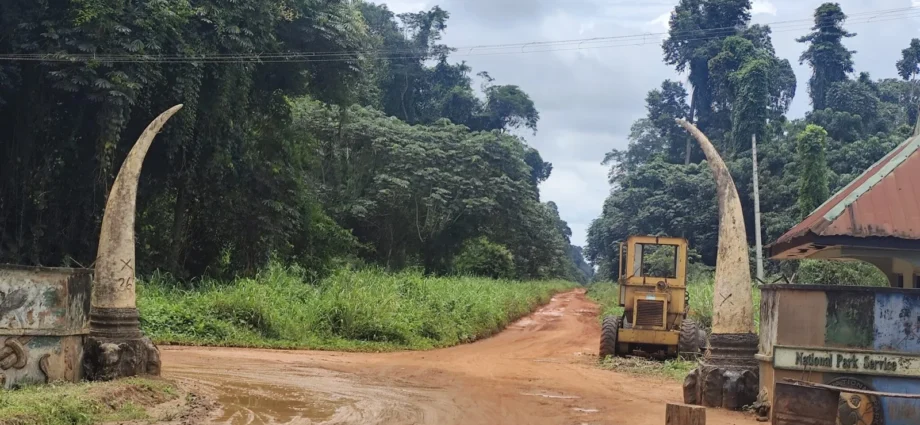By Usman Aliyu, News Agency of Nigeria (NAN)
Located in Ovia South-West Local Government Area of Edo, the Okomu National Park is one of Nigeria’s largest surviving rainforests.
Birds call from the towering mahogany trees, as a thin mist drifts across the dense undergrowth.
Kowei Kingsley, a 31-year-old ranger, tightens his bootlaces and checks his GPS tracker as his team sets out for their routine morning patrol – a daily pushback against illegal loggers, poachers, and farmers from nearby communities, who, for decades, have endangered the forest.
But Kingsley was not always on the conservation side; his transformation followed a non-profit initiative that integrated community participation and alternative livelihood support into conservation, turning former exploiters into protectors.
Just a few years ago, Kingsley was one of those who crept into the park; with a chainsaw slung over his shoulder, he felled precious trees, hunted ‘bushmeat’, and returned home with enough to feed his family.

“I did not realise the harm; we thought the forest was endless; but when the animals began to disappear and the tall trees were depleted, I knew something was wrong.
“Now, I tell others to stop cutting trees; this is because these trees help us in several ways, such as the air we breathe; they help in erosion and wind control, and also serve as shelter to humans and the animals,” he said.
Kingsley is one of the many residents of the communities neighbouring Okomu National Park, who, previously, viewed the park as a government-imposed barrier on their livelihoods.
Okomu National Park spans over 202 square kilometres of tropical rainforest, a remnant of Nigeria’s once-vast rainforest belt.
It is home to forest elephants, white-throated monkeys, buffaloes, bush pigs, duikers, and more than 150 bird species, many of them endangered.
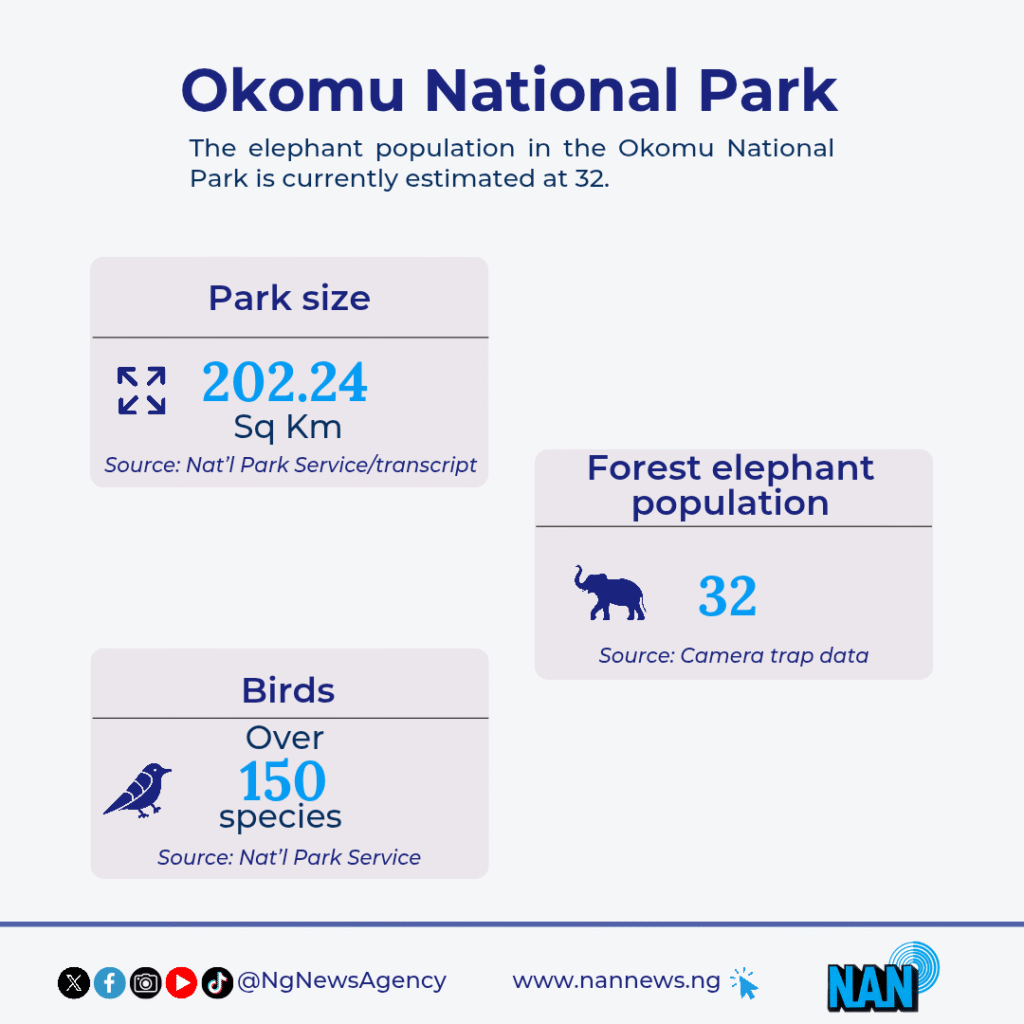
What was once a haven for biodiversity became a battleground between survival and sustainability.
Israel Nosakhare, another resident-turned-forest ranger and an indigene of the Udo community, recounted how they could see monkeys and even buffalo crossing the road, to their admiration.
“We were always excited to watch them; but after some years, those animals disappeared.
“Hunting, logging, and small-scale farming were the pillars of livelihood in the forest communities, Nosakhare said.

However, excessive exploitation by hunters, loggers, and farmers wiped out much of the park’s wildlife population over time.
“It was not good at all; the forest became quiet, and that made me realise something had to change.
“That is what motivated me to join the rangers: to help protect what is left and bring back the animals we once had,” he said.
Mr Lawrence Osaze, Conservator of Park at Okomu National Park, recalled that when he was transferred to the park in 2022, he met “a place in total disarray.”

However, 2022 marked a turning point; a new community-led conservation model, introduced through a partnership between the Africa Nature Investors (ANI) Foundation and the National Park Service (NPS), began to transform the park.
The model restored order and rebuilt trust with surrounding communities, and redefined conservation from enforcement to collaboration.
It turned the very people who once threatened the forest into its strongest defenders.
Today, 38 forest rangers employed by ANI from the communities, and who are mostly young men like Kingsley and Nosakhare, patrol the park daily.
Using GPS-enabled Spatial Monitoring and Reporting Tools (SMART), they track wildlife movements, monitor illegal incursions, and collect real-time data.
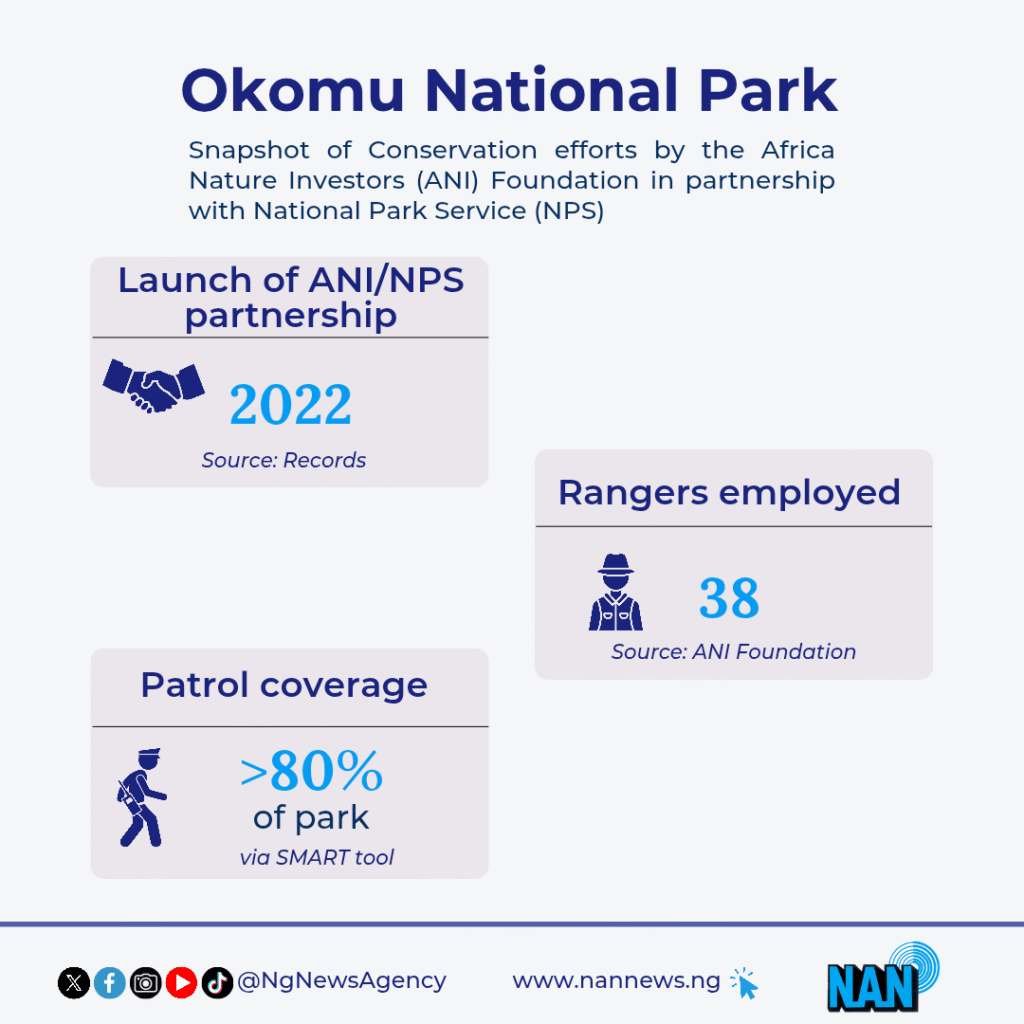
‘A major turnaround’
According to the Project Manager for Okomu at the Africa Nature Investors (ANI) Foundation, Peter Abanyam, the progress has been remarkable.
“Before, we used to hear chainsaws almost every week; now, two or three months can pass without hearing a single one.
“Patrol coverage has reached more than 80 per cent of the park; it is a major turnaround.
“Camera traps deployed by the foundation have recorded more than 32 forest elephants, including calves, clear evidence that the population is not only stable but breeding.
“The forest is regenerating; areas that were once logged are now lush again,” Abanyam said.
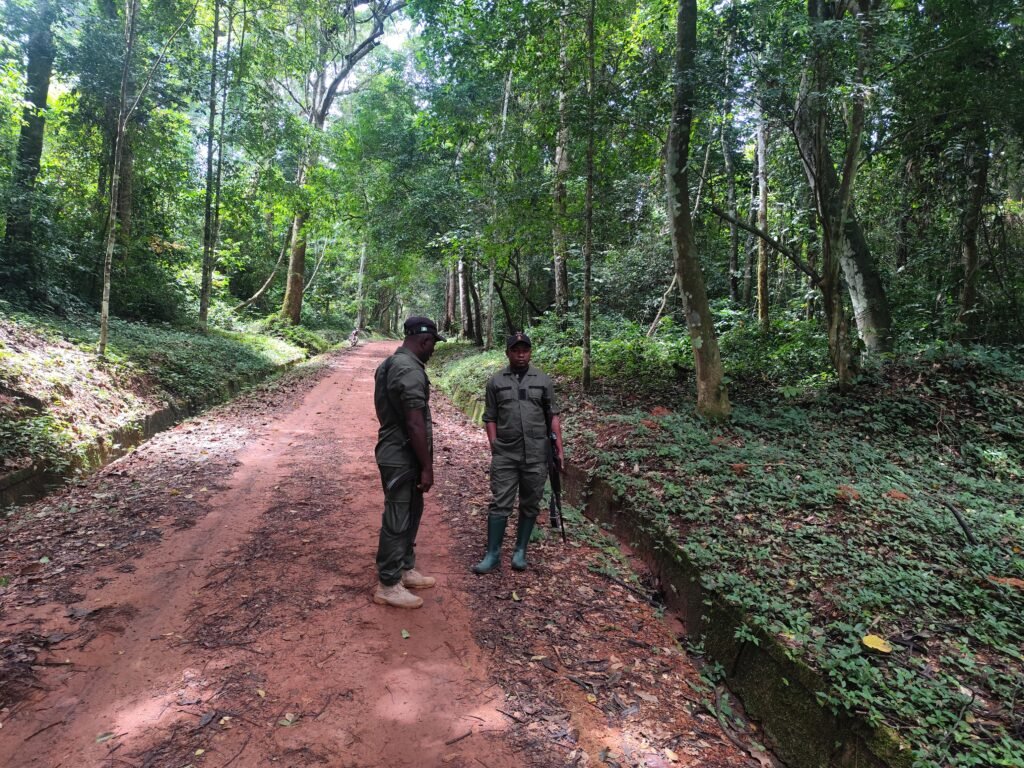
Beyond enforcement, the conservation model introduced by the ANI and NPS partnership also recognises the close link between conservation and community livelihoods.
To reduce local dependence on illegal forest activities, six Savings and Loan Groups (SLGs) were established across surrounding settlements, including Udo, Iguewan, Okomu AT&P, and Ugolo.
Each group comprises about 20 members, mostly women and young people, who pool their savings, access small loans, and receive training in entrepreneurship and sustainable farming practices.
Rita Jerome, a 35-year-old teacher-turned-entrepreneur from the Okomu AT&P community, smiled as she spoke about how the initiative transformed her life.
“Before, I had business ideas but no money; through our group, I have taken loans of N300,000 and N700,000.
“I started poultry farming, and now I supply eggs to nearby villages,” she said.
She added that the opportunity had helped reduce her reliance on the forest for income.
Similarly, a cocoa farmer from the Udo Community, Sikiru Azeez, recalled how he once depended on middlemen for loans to buy farm inputs, often on exploitative terms.
“Now we have financial independence; it has reduced pressure on the park because people have alternatives,” he said.
So far, records show that more than 120 residents have benefited from the SLG model, creating a ripple effect of economic empowerment and environmental consciousness in communities surrounding the park.
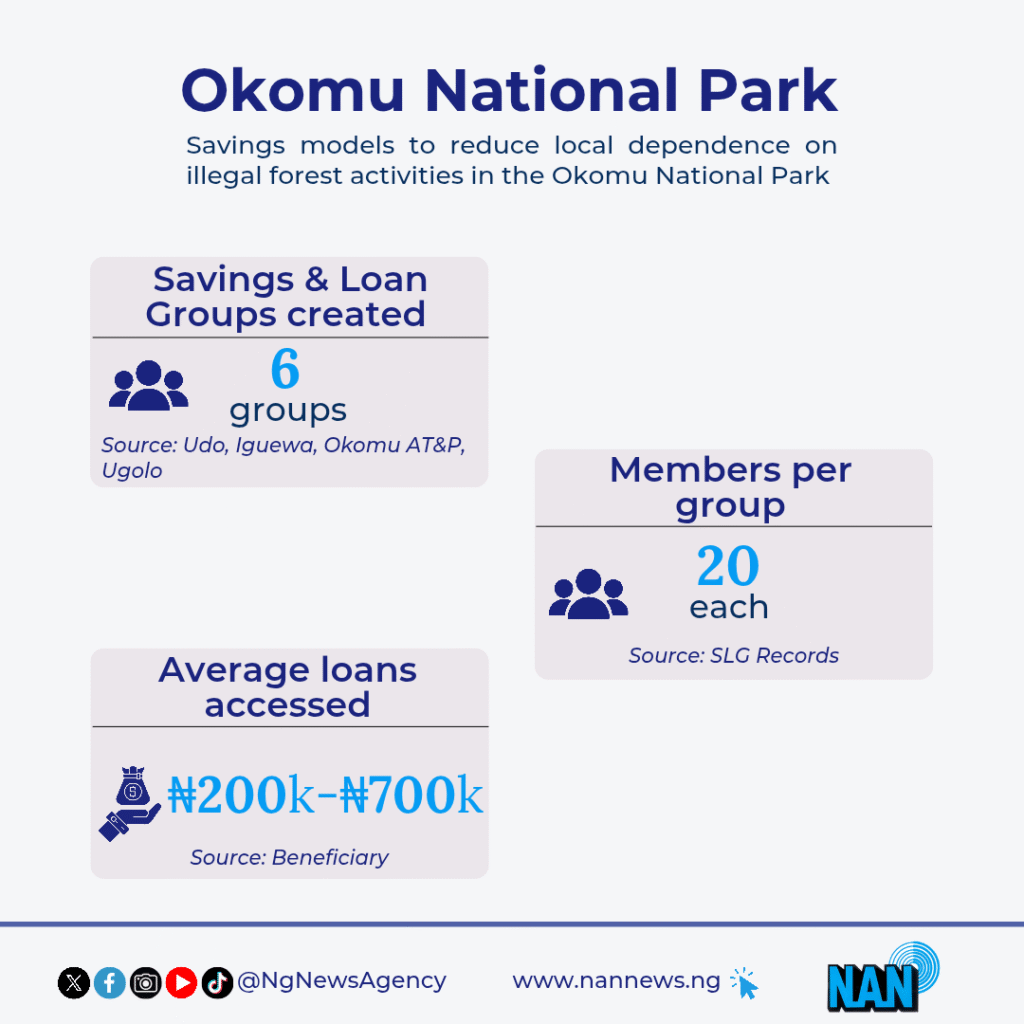
‘Lungs of Edo’
The Edo Forestry Commission has also endorsed the ANI and NPS initiative.
The commission’s chairman, Valentine Asue, described Okomu as the “Lungs of Edo State” and a vital component of Nigeria’s climate resilience strategy.
“Okomu is the only forest in Edo that still has large trees standing among 49 reserves.”
He explained that the state government’s support for ANI’s work aligns with its forest regeneration policy, which mandated the planting of five trees for every one felled.
“Conservation is now part of our development agenda,” Asue said.
He added that the government recently constructed a 30-room accommodation block for park rangers to enhance their living and working conditions, another sign of its commitment to sustainable forest management.
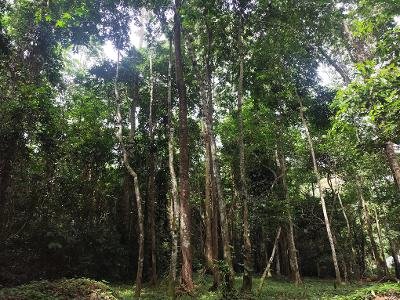
Relations between local communities and park authorities were once strained. Many residents saw the park as a government-controlled “no-go zone.”
But a participatory management approach has helped change that perception.
The park’s conservator, Osaze, admits that past confrontations were frequent.
“Before now, we had constant clashes; today, communities call to report illegal activities before we even get there. They have become our eyes and ears; that shift in mindset, is perhaps the greatest success of all,” he said.
Nigeria remains one of the top 10 countries losing primary forest cover at the fastest rate.
Between 2001 and 2023, the country lost more than 1.9 million hectares of tree cover, a 14 per cent decline, according to Global Forest Watch.
The Niger-Delta region, where Okomu National Park is located and which harbours some of Africa’s richest biodiversity, faces mounting threats from oil pollution, deforestation, and population pressure.
Top-down never works
Experts warn that without community participation, conservation policies are bound to fail; they note that top-down protection has never worked in isolation.
Dr Stella Egbe of the Nigerian Conservation Foundation (NCF) commended the community-led approach at Okomu National Park, describing it as a model that placed ownership and responsibility in the hands of local people.
“With that level of support and incentives from conservation organisations, the activities do not appear alien but are formed in line with the culture of the proximal community.
“It is, therefore, a welcome development.”
Egbe described the establishment of Okomu National Park as a deliberate policy initiative, noting that Nigeria’s network of national parks formed a key component of the country’s broader strategy to conserve its rich genetic and ecological resources.
“It is great that it is being sustained; the 2030 biodiversity targets rest on the protection of 30 per cent of land and other ecosystems within our boundaries.
“The existence of our national parks ensures that we are on course to meet these targets,” she said.
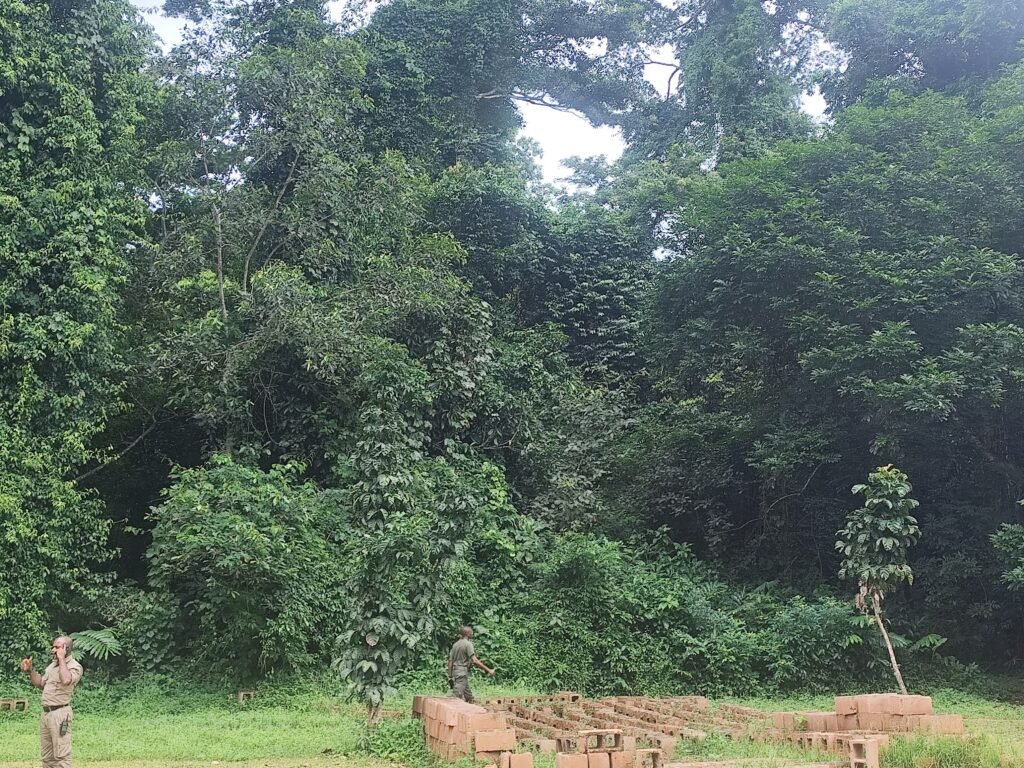
Beyond wildlife preservation, the Okomu model also supports climate adaptation.
The rainforest serves as a vital carbon sink, storing thousands of tonnes of carbon dioxide (CO₂) each year.
By curbing deforestation and promoting sustainable livelihoods, the initiative aligns with Nigeria’s Nationally Determined Contributions (NDCs) under the Paris Agreement.
However, in spite of its progress, Okomu faces logistical and financial constraints.
Rangers still lack sufficient patrol vehicles and communication gadgets, while some park boundaries remain unmapped, leading to land disputes.
“People sometimes encroach unknowingly; ANI is working with the Edo GIS agency to clearly demarcate the park boundaries,” Abanyam said.
Scaling up the model is another hurdle; Edo has 49 forest reserves, many of which are under severe pressure.
Observers say replicating Okomu’s success elsewhere will require sustained funding, stronger enforcement, and policy consistency. (NANFeatures)
***If used, please credit the writer and the News Agency of Nigeria.
This story was produced as part of Dataphyte Foundation’s Biodiversity Media Initiative project, with support from Internews’ Earth Journalism Network.



